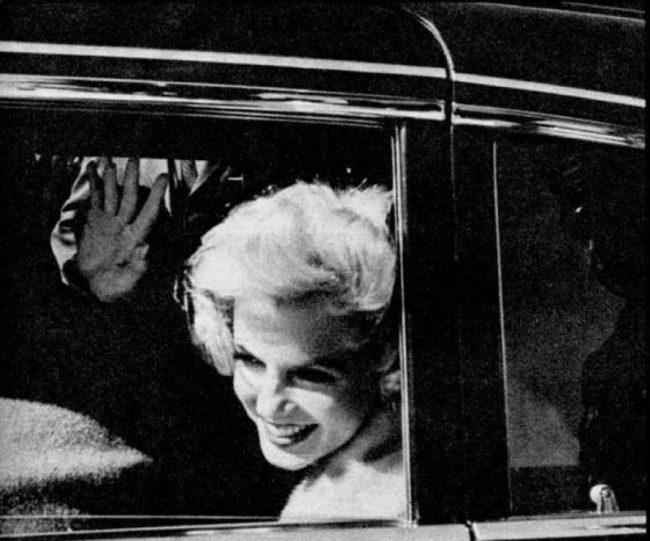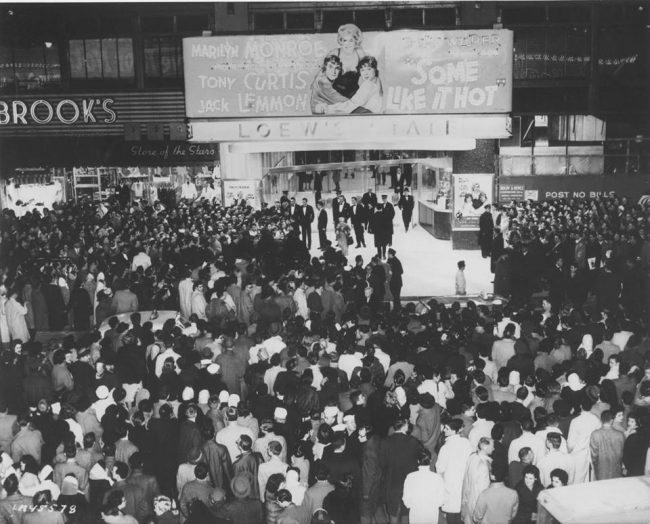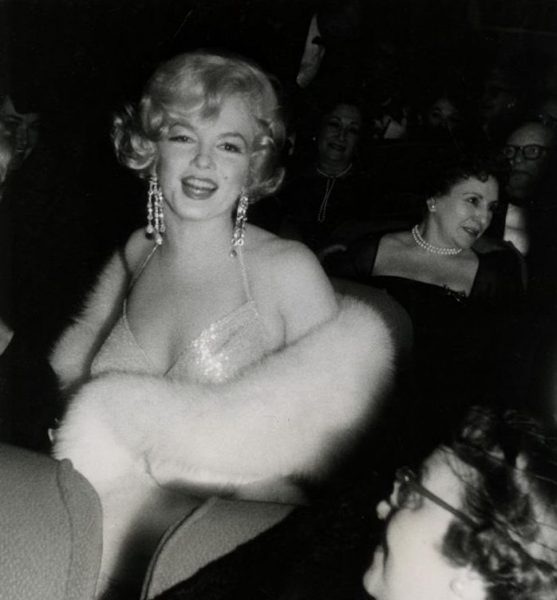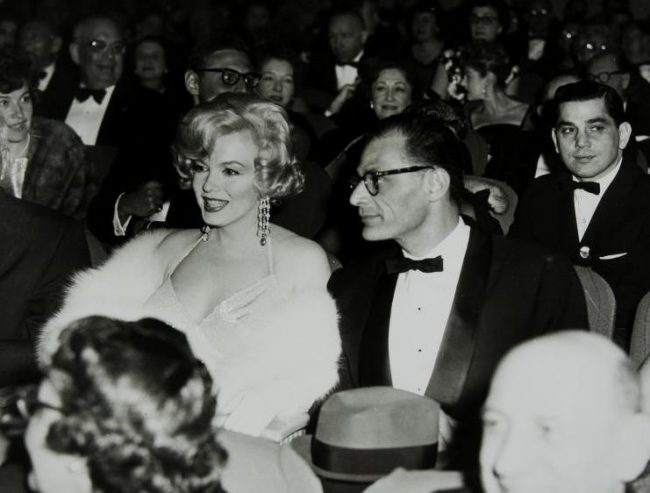
Some Like It Hot opened at cinemas across the US sixty years ago today, on March 29, 1959. In an article for Perth Now, Troy Lennon celebrates the diamond anniversary of one of the most beloved movies in history.
“The press were out in force at Marcus Loew’s newly refurbished Capitol Theatre on Broadway in New York to cover one of the biggest film premieres of the year. It starred matinee idol Tony Curtis and up-and-coming comic talent Jack Lemmon, best known from comedy hits Mr Roberts and Bell Book And Candle.
The support cast of actors was also stellar, with big names from classic gangster films … Quirky, sexy, slightly subversive and the work of one of the most in-demand directors at the time, Billy Wilder, it had hit potential. But what really made Some Like It Hot such a big deal was that it was Marilyn Monroe’s first film in nearly two years. Monroe had been taking time off to focus on her marriage to playwright Arthur Miller.
On the night of the premiere, March 29, 1959, 60 years ago today, Monroe, accompanied by Miller, told reporters Lemmon was the ‘funniest man in the world’ and like the rest of the audience laughed all the way through the film. Critics also loved it and Some Like it Hot is now regarded as one of the all-time great film comedies.
The film was inspired by a 1935 French farce titled Fanfare d’Amour (Fanfare Of Love), about two musicians, Jean (Fernand Gravey) and Pierre (Julien Carette) … Gravey’s love interest, bandleader Gaby, was played by Australian actor Betty Stockfeld.
The story and screenplay were co-written by German screenwriters Michael Logan and Robert Thoeren, who had fled Germany in 1933 after the Nazis came to power. After the war they returned to Germany and in 1951 remade the film as Fanfaren der Lieben.
For the leads Wilder wanted Frank Sinatra as musician Joe and singer Mitzi Gaynor as bandmember Sugar. But Sinatra never turned up for the audition and when Monroe discovered Wilder was doing the film she wanted to play Sugar … having Monroe as a drawcard gave Wilder a freer hand with the rest of the casting. He had already asked Tony Curtis to play Jerry, but without Sinatra he instead cast him as Joe and Lemmon as Jerry.
The director was fastidious about the look of the film. It was to be shot in black and white, because it was a period piece and a tribute to gangster films, also so that it would be easier to pass off Curtis and Lemmon as women. Famous Australian-born designer Orry-Kelly worked on the costumes (winning the film an Oscar).
During filming, Monroe was as difficult as ever … Curtis did his best to disguise his irritation but Lemmon was sympathetic, trying to calm Monroe’s nerves.
But the result was screen magic. From the moment Monroe sashays past Lemmon at a train station causing him to utter ‘That’s just like Jell-O on springs’ the farce hardly ever lets up.
It won three Golden Globes, an Oscar and a BAFTA and made bigger stars of Curtis and Lemmon, but was arguably Monroe’s last truly great role.”




